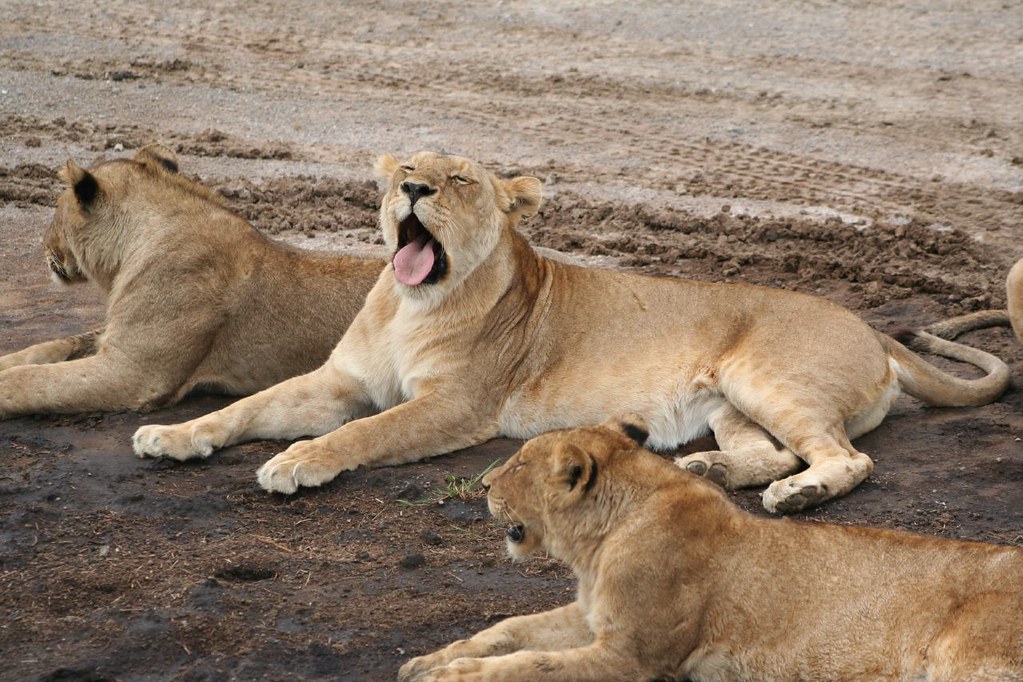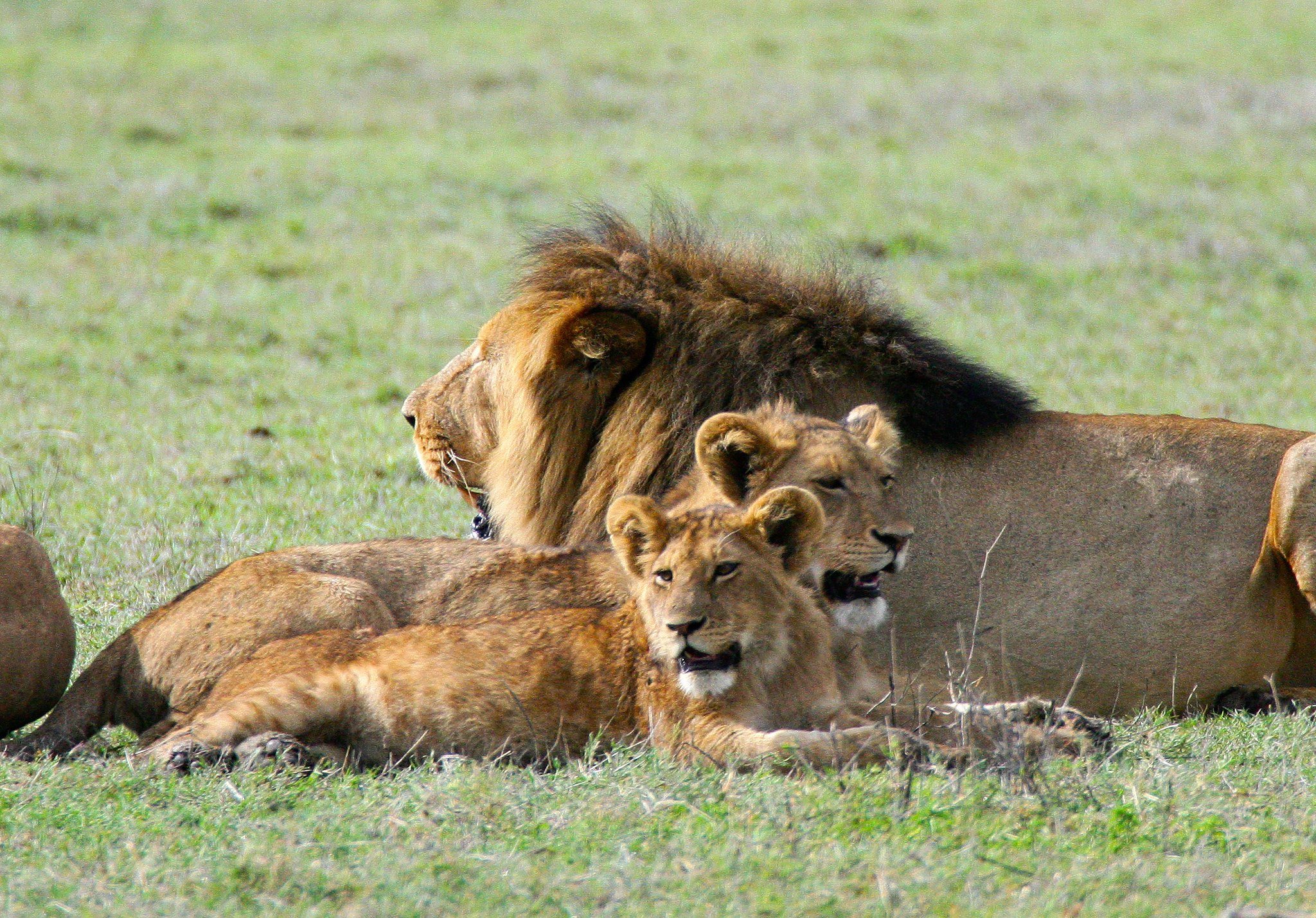10 Fun Facts About Lions
Tanzania is proud of its lions and other animals. More lions live in this country than in any other country in the world—about half of all wild lions live there. People come from all over the world to see these beautiful animals because this is known as one of the best places for adventure in the world.

Here are ten interesting facts about lions.
1. They are the world’s second-biggest cat.
It’s likely that lions would be the biggest cat in the world, but tigers are actually bigger.
Each male lion weighs about 400 pounds (180 kilograms), and each female lion weighs about 290 pounds (130 kilograms). At the shoulder, they are between 3.5 and 4 feet (1 and 1.2 meters) tall, and they grow to be about 10 feet (3 meters) tall.
The Guinness Book of World Records says that Simba, a male lion with black fur, was the biggest lion ever kept as a pet. At 44 inches (1.11 meters) tall, he stood tall and proud. “Simba” is the word for lion in Swahili. Like the main character in The Lion King!
There’s no question that modern lions are huge, but the largest of their kind has been extinct for a very long time. According to scientists, the Panthera leo atrox, also called the American Cave Lion, was about 25% bigger than modern lions and weighed a huge 771 pounds (350 kilos).
2. Lions eat between 11 and 16 pounds of meat every day.
Lions have learned to live in dry savannas and can go up to four days without drinking water. It’s not like these animals lack water sources; they drink the blood of their prey and get water from plants like the Tsamma fruit.
These big cats don’t need water every day, but they do need food. Every day, males need about 16 pounds (7.2 kilograms) of meat and females need about 11 pounds (5 kilograms). These big animals eat wildebeest, Cape buffalo, and zebras. But when there isn’t much food around, they’ll eat mice, birds, lizards, and hares. It is also known for lions to steal food from hyenas and other animals that hunt.
3. Lionesses are the ones who hunt.
In contrast to other animal types, lionesses hunt more than any other type. It’s easier for female lions to sneak up on and kill their food because they are smaller and faster. Males will sometimes join the hunt when they are after bigger animals, but the lionesses do most of the work.
But when it’s time to eat, the males get the meat first, then the females, and finally the kids. When they are about a year old, lion cubs don’t start to hunt.
The main job of male lions is to protect the group’s area from other prides and predators, not to find food. The pride’s lionesses look out for the kids when they’re not out hunting. It’s simple to say that they do everything.
4. They are really social animals
Lions, on the other hand, are known for living alone. In fact, lions are the only type of cat that lives in groups, which are called prides. Anywhere from two to forty lions live in a pride. There are three to four males, about twelve females, and their cubs.
The lionesses in a pride are all tied to each other. When they grow up, the male cubs will leave the group and start their own pride, but the female cubs will stay with the group their whole lives. When young men become men, they start their own pride by taking over an existing one from another man.
5. Lionesses take turns taking care of their young
People often say that raising a child requires a village. For lions, raising a cub requires pride. Lions don’t have a set breeding season, but females will time their births so that they can raise their cubs together. This is called a “crèche.”
The moms will feed, care for, and raise all of their pride’s cubs, not just their own. This way of raising kids together is meant to help them stay alive, since lionesses only have one to four babies at a time. Moms take care of their cubs until they are two years old, at which point they start the breeding process all over again.
6. They’re at the top of the food chain
Apex predators, also known as top predators, occupy the highest position in the food chain in the wild. People are the only animals that can really hurt them because they are one of the most dangerous animals in Africa.
The criminal trade in wildlife, poaching, and climate change are all things that people do that put lions’ lives at great risk. The International Union for the Conservation of Nature (IUCN) says that there are less than 25,000 lions left in Africa and that they are likely to go extinct.
Small-group safaris that are good for the environment are one way to see lions from afar without disturbing them or taking them out of their natural home.
7. You can hear their roars from miles away
Lions don’t purr like their smaller cousins do; they roar. It’s possible to hear their loud call from 5 miles away; it can reach up to 114 decibels, which is the same volume as a chainsaw.
Lions, both male and female, roar, but they use their growls for different things. Males roar to show that they are in charge, keep other animals out of their area, or let the pride know that there is danger nearby. On the other hand, females roar to talk to males when they are trying to mate.
For forty seconds, the pride will roar together, and even the cubs will join in. This is how they mark their area.
8. Their manes tell a story
The mane is one of the things that makes a lion stand out. These long, thick hairs aren’t just for looks; they can also tell you about a lion’s age, health, and surroundings.
When a male lion is a year old, his main fur starts to grow. Their mane gets darker and longer as they get older, reaching up to 6 inches (16 cm). Other lions can tell you are fit and dominant by your thicker, darker mane, and females find them more beautiful. Some studies have even found that cats with darker manes have higher levels of testosterone.
But not every male lion has a main. Most of the lions in Kenya’s Tsavo National Park don’t have manes. Some think that the hot, thorny area where they live makes long mains too much of a hassle, but there isn’t a single agreement on this.
9. Lions can climb trees, but not very well.
Do you know that in some parks, lions like to hang out in trees? Most pictures of lions show them roaming across open plains. Leopards are very good at climbing trees, but lions were not designed to be able to do the same. Lions are big and heavy, which makes them not very good at climbing.
But some groups of lions have found it useful for more than one reason. From the trees, they can see other animals better, which helps them hunt or stay safe. They are top predators, but they have been known to climb trees to get away from buffalo groups.
It’s also nice to be comfortable to hang out high. Because it is a lot cooler, these smart cats have found a way to avoid biting bugs on the ground. In Tanzania and Uganda, there are national parks where people can see lions climbing trees.
10. Only two places in the world are home to lions.
In 1996, lions were named an endangered species, and their numbers keep going down. In modern times there are just two recognized subspecies in the wild, the African lion (Panthera Leo Leo), and the Asiatic lion (Panthera Leo persica).
African lions can be found south of the Sahara Desert, while the Asiatic lion can only be found around Gir Forest National Park in western India. The only way to catch groups of lions today is to take a tour in eastern or southern Africa.
Lion Quick Facts
- Scientific Name: Panthera Leo
- Common Name: Lion
- Size: 3-4 feet tall, 4.5-6.5 feet body with 26–40-inch tail
- Between 265 and 420 pounds
- 10 to 14 years of life
- Food: carnivore
- Sub-Saharan Africa is their home.
- Status of Conservation: Vulnerable


















